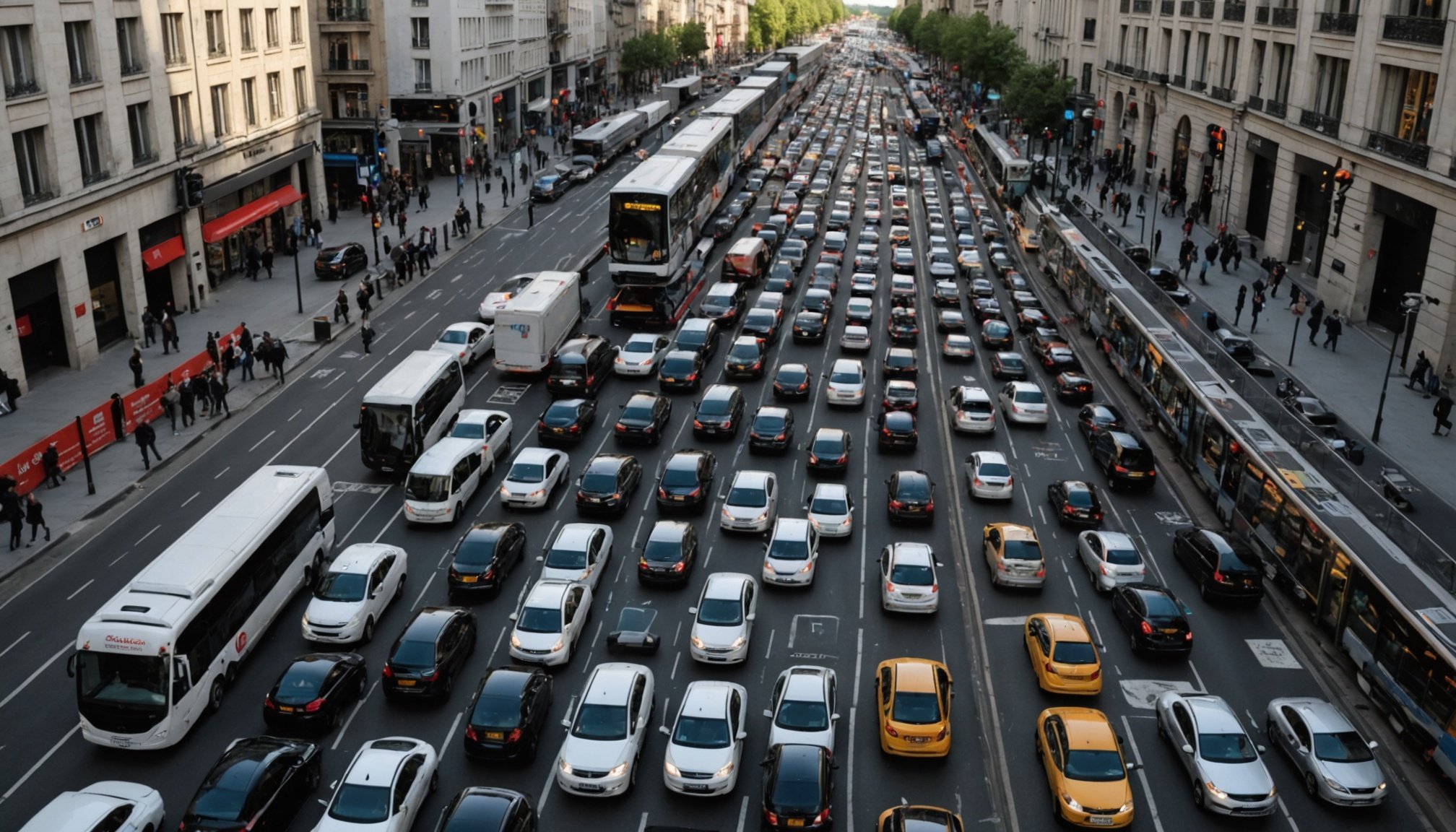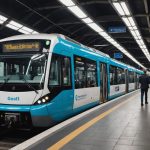The Impact of AI on Urban Traffic Management
Integrating AI in Traffic Management systems is reshaping urban landscapes worldwide. Cities, grappling with chronic congestion, are turning to artificial intelligence to optimise traffic flow and reduce delays. By harnessing technologies like adaptive signal control and real-time traffic monitoring tools, AI provides dynamic solutions to the growing problem of urban congestion.
Cities suffer from congestion, leading to increased pollution, fuel consumption, and lost time. In London, delays cost individuals roughly 227 hours annually. Such statistics highlight how imperative it is to adopt robust solutions. AI offers hope through predictive analytics, enabling proactive traffic management—reducing queues and enhancing road safety.
A pivotal case is in Los Angeles, where AI-powered traffic signals have been trialled successfully. These smart signals adjust timings based on real-time data, leading to a 12% reduction in congestion. Similarly, in Pittsburgh, AI-algorithms have cut travel time by 25% and emissions by 20%, illustrating transformative results.
Urban planners are focusing on Urban Congestion Solutions leveraging AI. Through machine learning and data-driven insights, solutions are crafted to anticipate bottlenecks and streamline vehicular movement. The commitment to AI technologies not only enhances commuting experiences but also contributes to environmental sustainability, thus fostering smarter, more liveable cities.
Also read : Revolutionary Innovations Transforming Electric Vehicle Batteries for Extended Range and Rapid Charging
Innovations in Traffic Technology
Traffic technology is rapidly evolving to meet the demands of modern urban life. At the forefront are smart traffic lights, which are designed to adapt to real-time conditions.
Smart Traffic Lights
These traffic lights use sensors to monitor traffic flow, adjusting their signals to optimise efficiency. By reducing wait times at intersections, they minimise congestion and improve commuter experiences. Smart traffic lights are an essential component of contemporary transport systems, helping to mitigate traffic jams.
AI Algorithms for Predictive Analysis
AI algorithms play a crucial role in predicting traffic patterns. These advanced systems analyse data, such as road conditions and vehicle volumes, to anticipate congestion. This predictive capacity allows for adaptive traffic signals, which adjust timings based on anticipated traffic, enhancing flow and reducing travel delays.
Utilizing Real-Time Data for Traffic Flow Optimization
Real-time data is vital for effective traffic flow optimization. Information from GPS devices and sensors feeds into a central system, enabling traffic managers to respond promptly to changes. The advantages of this approach include quicker commute times and improved environmental outcomes. By employing machine learning, traffic systems can continuously refine their operations.
Innovations in traffic technology, through smart lights, AI, and real-time data, represent a significant shift toward more efficient and responsive traffic management systems.
Effectiveness of AI Solutions in Reducing Congestion
Traffic congestion is a pervasive issue in urban environments, often leading to increased travel times, pollution, and commuter frustration. Fortunately, AI-driven solutions have been making significant strides in addressing these challenges. Evidence and case studies demonstrate that these congestion reduction strategies effectively optimise traffic flow in various cities.
One notable example is the implementation of AI in Los Angeles, where machine learning algorithms have been used to adjust traffic signal timings in real-time. This system has reportedly led to a 10% reduction in average travel time across the city. Such quantifiable statistics provide compelling evidence of the traffic flow improvement that AI solutions offer.
Comparing traditional traffic management techniques with AI-driven approaches reveals a marked increase in effectiveness. Traditional methods often rely on static data and manual interventions, whereas AI continuously analyses live data, enabling dynamic adjustments. This adaptability allows for more efficient traffic management.
AI’s ability to process vast amounts of data and predict congestion patterns ensures that cities can make informed decisions promptly. The scalable nature of these congestion reduction strategies makes them well-suited for rapidly growing urban areas, highlighting the potential of AI as a critical tool for improving traffic flow globally.
Broader Benefits of AI Traffic Management for Cities
Integrating AI traffic management can significantly reduce traffic congestion, leading to substantial environmental and economic benefits. The environmental impact is notable, as traffic congestion is a major source of urban pollution. By using AI to optimize traffic flow, cities can decrease vehicle idling time, which reduces emissions and lowers air pollution levels. This cleaner air contributes to better public health and a more sustainable environment.
Economically, the adoption of AI traffic solutions can result in savings for cities. Reduced congestion means less fuel consumption and vehicle wear, translating to lower transportation costs for citizens. Furthermore, AI traffic systems can improve overall productivity by minimizing delays and allowing smoother commutes.
From an urban planning perspective, AI traffic management facilitates smart infrastructure development. As cities grow, integrating AI allows planners to design adaptive traffic systems that respond dynamically to real-time conditions. This adaptability not only enhances economic considerations by enhancing mobility, but also aligns with sustainable urban development goals. AI systems can be incorporated into future projects, creating more efficient, livable cities. By leveraging AI for urban traffic solutions, cities can enjoy environmental, economic, and planning advantages today and in the future.
Future Trends in AI and Traffic Management
The fusion of AI advancements and Future Traffic Technologies is reshaping how cities handle congestion and mobility. This dynamic intersection highlights emerging components of Smart Cities, where technology harmonizes with everyday life.
Emerging Technologies in Traffic Management
Various emerging technologies are leading the charge in transforming traffic systems. Innovations such as adaptive traffic signals and vehicle-to-everything (V2X) communication play a pivotal role. By harnessing real-time data, these systems optimize traffic flow and reduce bottlenecks, making streets safer and more efficient.
Role of AI in Smart City Development
AI advancements serve as the backbone of next-generation Smart Cities. They enable predictive analytics, allowing urban planners to foresee congestion patterns and adjust accordingly. This proactive approach not only mitigates traffic jams but also enhances public transportation efficiency. AI’s integration fosters a connected ecosystem, improving residents’ quality of life.
Potential Challenges and Considerations
With these transformations, there are also challenges. Ethical and privacy considerations around AI deployment in urban areas are critical. Ensuring data protection while maintaining operational transparency is essential. Addressing these concerns will require balanced regulations and public trust in Future Traffic Technologies.











